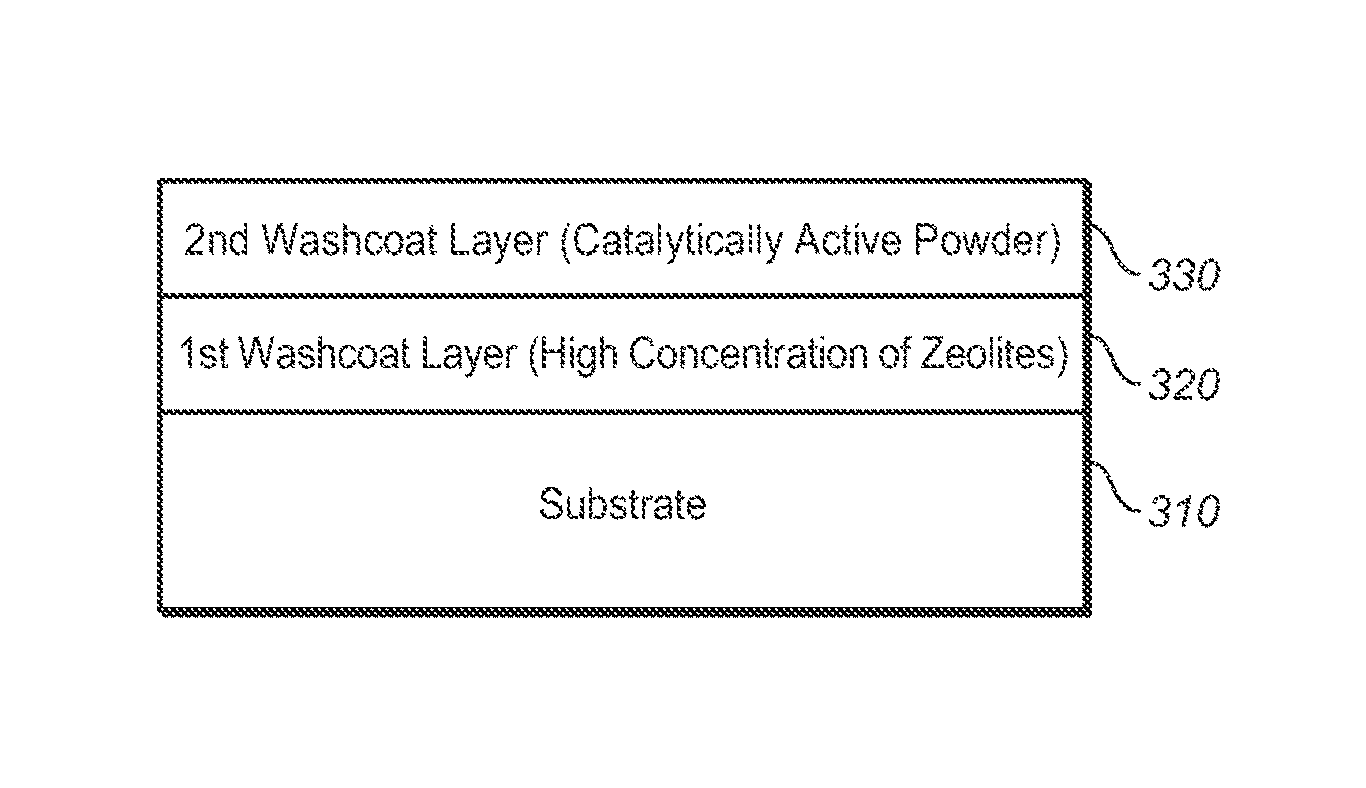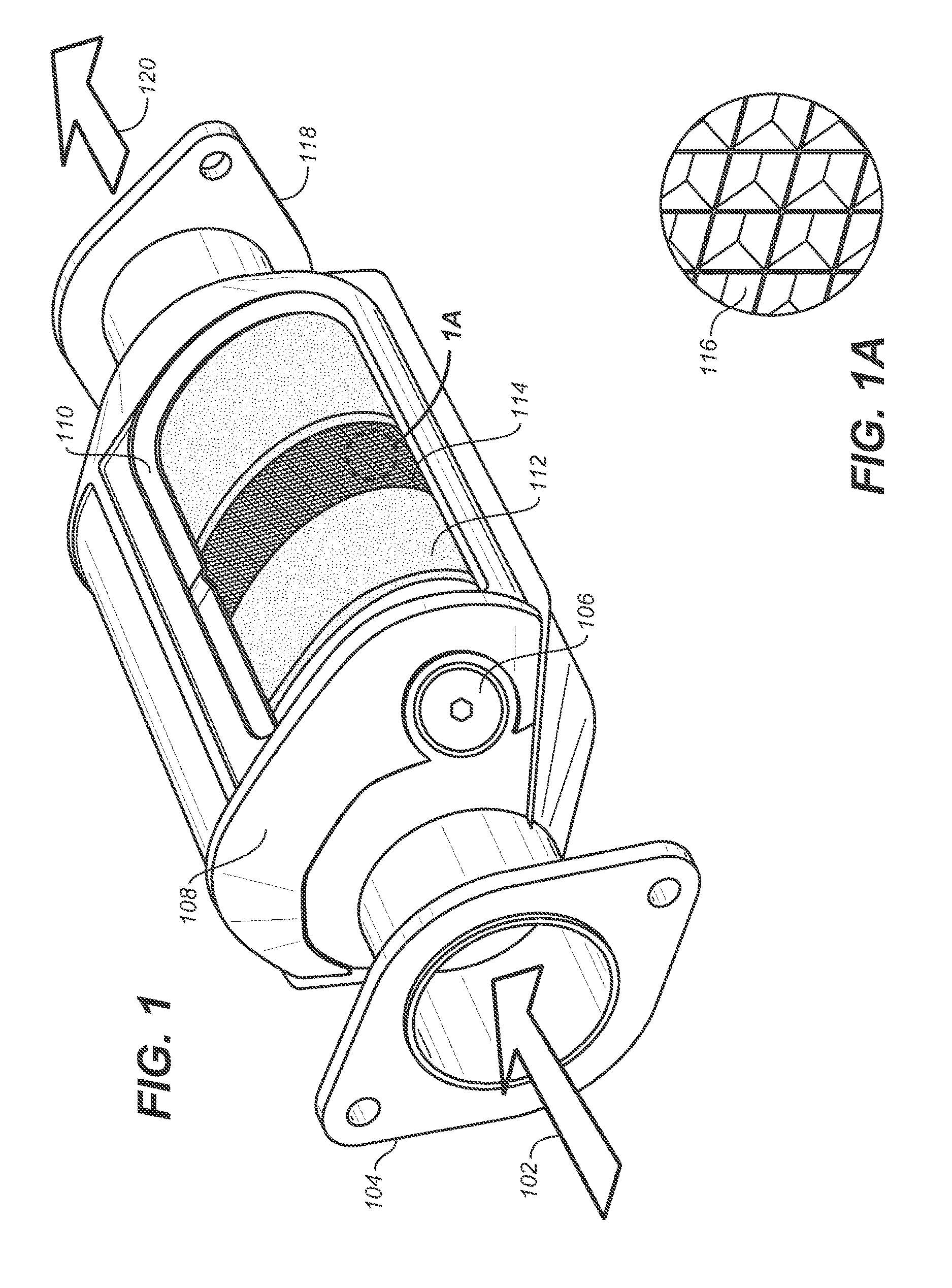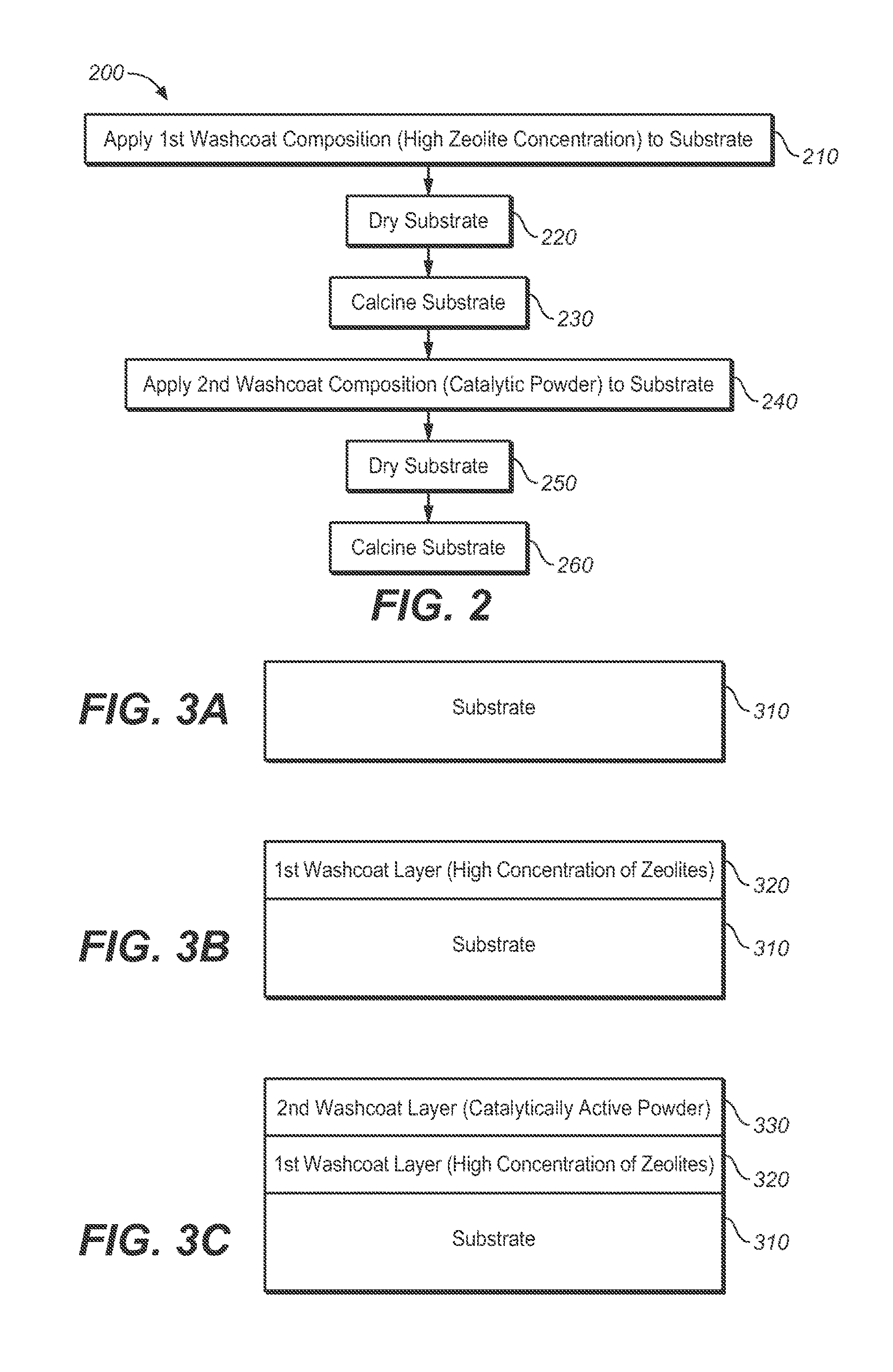Washcoats and coated substrates for catalytic converters and methods of making and using same
a catalytic converter and washcoat technology, applied in the field of catalytic converters, can solve the problems of reducing the efficiency of pgm catalysts, releasing pollutants into the environment, and reducing the efficiency of catalytic converters over time, so as to reduce the emission of one, improve the performance of the emission control system, and reduce light-off temperatures
- Summary
- Abstract
- Description
- Claims
- Application Information
AI Technical Summary
Benefits of technology
Problems solved by technology
Method used
Image
Examples
example 1
Substrate-Zeolite Particles-Catalytic Powder Configuration, or S-Z-C, Configuration: No Zeolites in Catalyst-Containing Washcoat
[0756](a) First Washcoat Composition: Approx. 70 g / l as Follows:
[0757]3% Boehmite
[0758]80% Zeolites
[0759]17% Porous alumina (MI-386 or the like)[0760](b) Second Washcoat Composition: Approx. 120 g / l as Follows:
[0761]3% Boehmite;
[0762]5% Silica;
[0763]92% NNm Powder (nanoparticle on nanoparticle on micro-particle), the powder that contains the PGM, i.e. the platinum group metals or precious metals.
[0764]Mix the washcoat ingredients from (a) with water and acetic acid and to adjust the pH to about 4. After adjusting the viscosity to the proper levels, the washcoat is coated onto the substrate with an approximate layer thickness of 70 g / l. Excess washcoat is blown off and recycled. This first washcoat layer is then dried and calcined. Following this first washcoating step, a second washcoating step is performed: the ingredients from (b) are mixed with water and...
example 2
Substrate-Zeolite Particles-Catalytic Powder Configuration, or S-Z-C, Configuration: Zeolites Present in Catalyst-Containing Washcoat
[0765](a) First Washcoat Composition: Approx. 70 g / l as Follows:
[0766]3% Boehmite
[0767]80% Zeolites
[0768]17% Porous alumina (MI-386 or the like)[0769](b) Second Washcoat Composition: Approx. 120 g / l as Follows:
[0770]3% Boehmite;
[0771]5% Zeolites;
[0772]92% NNm Powder (catalytic nanoparticle on support nanoparticle on support micro-particle), the powder that contains the PGM, i.e. the platinum group metals or precious metals.
[0773]The same procedure described in Example 1 is used to coat the substrate in this example.
example 3
Additional Example of Substrate-Zeolite Particles-Catalytic Powder, or S-Z-C, Configuration
[0774](a) First Washcoat Composition: 25 g / l to 90 g / l (approximately. 60 g / l or approximately 70 g / l preferred) as follows:
[0775]2-5% Boehmite (about 3% preferred);
[0776]60-80% Zeolites, such as 75-80% Zeolites (about 80% preferred);
[0777]15-38% Porous alumina (MI-386 or the like), such as 15-22% Porous alumina (about 17% to about 22% preferred).[0778](b) Second Washcoat Composition: 50 g / l to 250 g / l (approximately 120 g / l preferred) as follows:
[0779]2-5% Boehmite (about 3% preferred);
[0780]0-20% Silica (about 5% preferred);
[0781]40-92% catalytically active powder (about 92% preferred); and
[0782]0-52% porous alumina (about 0% preferred).
[0783]The same procedure described in Example 1 is used to coat the substrate in this example. In another embodiment, 0-20% Zeolites are used instead of the 0-20% Silica (with about 5% being the preferred amount of Zeolite used).
PUM
| Property | Measurement | Unit |
|---|---|---|
| diameter | aaaaa | aaaaa |
| diameter | aaaaa | aaaaa |
| diameter | aaaaa | aaaaa |
Abstract
Description
Claims
Application Information
 Login to View More
Login to View More - R&D
- Intellectual Property
- Life Sciences
- Materials
- Tech Scout
- Unparalleled Data Quality
- Higher Quality Content
- 60% Fewer Hallucinations
Browse by: Latest US Patents, China's latest patents, Technical Efficacy Thesaurus, Application Domain, Technology Topic, Popular Technical Reports.
© 2025 PatSnap. All rights reserved.Legal|Privacy policy|Modern Slavery Act Transparency Statement|Sitemap|About US| Contact US: help@patsnap.com



